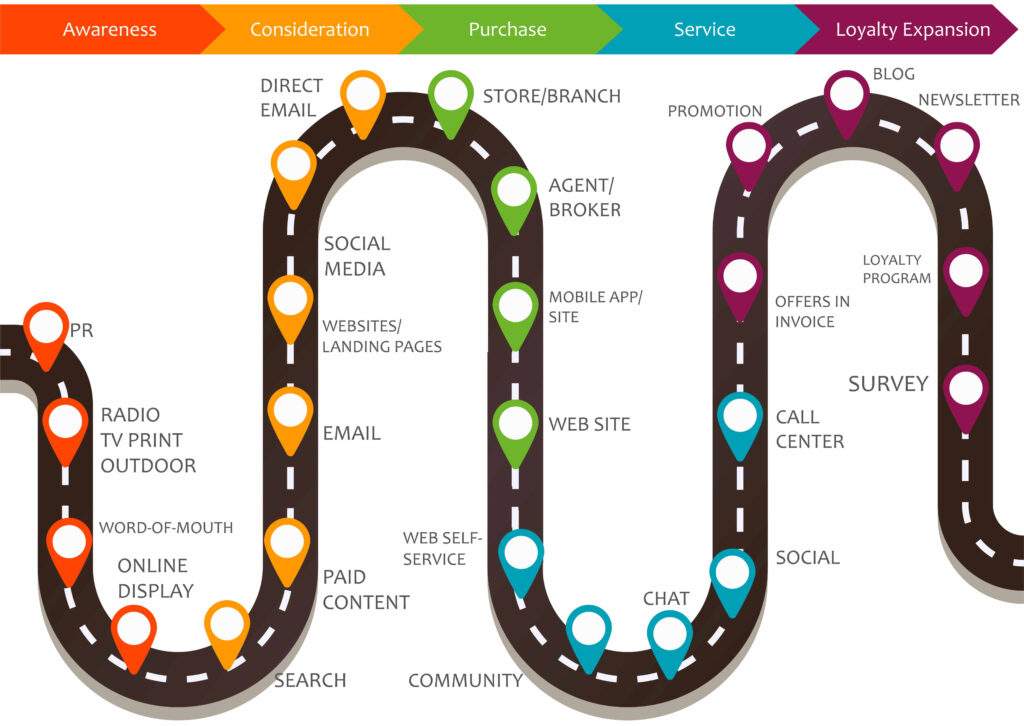Let’s begin by understanding the concept of business growth strategy. In simple words, it is a plan of action designed to help a business increase profits, revenue, and market share.
It’s a detailed process influenced by multiple factors, such as identifying opportunities, making product or service adjustments, investing in more than one marketing channel, and reaching new markets.
So, whether you’re a small business or an international brand, aiming for business growth is essential to staying relevant.
In this article, we will explore the crucial business growth strategies you should consider in 2024.
Preparation To Implement Business Growth Strategies
Before you start coming up with strategies to implement, it’s important to organize your company’s tasks and team to accommodate these changes.
These are some key areas you should start preparing:
Get Your Staff On Board
The professionals on your team are the primary driving force of your company’s basic functions. If you want to implement a business growth strategy, it’s important to ask for their input by asking some questions.
Start by identifying better ways to communicate as a team, streamlining internal processes, and familiarizing yourself with common growth strategies. Once you’ve established this connection, it’s time to start developing ideas together.
Brainstorming
We know that regular business activities are the first priority for keeping the company running. Still, it’s also important to set aside some time for you, your management, and your sales team to exchange ideas about understanding your niche’s marketplace, finding opportunities, identifying challenges, and executing strategies.
This is a crucial stage for agreeing on specific actions and monitoring what works and what doesn’t. It’s also important to consistently update and involve the team even after the discussions because it shows that you appreciate their input and keeps everyone aligned about the business growth expectations.
Market Forces Affecting Your Growth
Analyze what the market looks like for you and your customer base. You can start by identifying social demographic trends in your region and the economic or political factors affecting their purchasing preferences.
Similarly, people spend most of their time online, and assessing patterns and data from social media platforms can give you detailed insight into buying habits and changing processes. For example, it’s becoming common for businesses to open an online store to reach a larger customer base.
Customer Base
Study your current customer base and identify the demographic concentration by age or sex and the industry sectors they operate in. This will give you an idea of potential customers, and you can start targeting them with revised strategies. Plus, improving your current offerings will also help with customer retention.
Similarly, communicate with your customers; ask them what they like, dislike, or face challenges when dealing with your company. Take their suggestions on what they’d like to expect from you in the future and work on it.
Profit Concentration
Take a look at your different revenue streams and total sales revenue to review which product line or service offerings are bringing in the most profits to your company, deliver the highest gross margins, and cover costs. Try to gauge what factors are affecting these differences; for example, outsourced and in-house labor would have created different prices.
Once you’ve identified these, highlight products or services that generate higher margins, so you know which ones you must promote and sell more. The ones that don’t generate enough profits reevaluate their prices to see if there’s something you can change; if not, save your resources on promoting them if it’s to obtain better opportunities.
Sales Forecast
For each trading month, set a realistic sales target based on your products or services and generate separate invoice codes to help you track what’s affecting your overall sales.
Analyse key customers’ purchase trends to predict what other products or services they could buy in the future; use this to plot sales revenue but also keep a record of these monthly sales.
Key Strategies For Business Growth In 2024
Referral programs, customer rewards, digital advertising, etc., have been part of business growth strategies for quite a while, and there’s no doubt that these tried and tested methods work.
However, with 2024 already here, it’s time to up your game and explore more effective and up-to-date ways to grow your business.
So, how what should you consider? Let’s find out.
Market Penetration
The market penetration strategy involves “growing” your business by increasing your supply of your product line or services. You can achieve this by encouraging current customers to buy more, grabbing the attention of your competitor’s customers, and converting non-buyers in the same market space into buying customers.
The aim is to focus on markets in which you already have a presence so you can leverage that presence as a foundation for cost-effective business growth. Common tactics for market penetration include increasing the marketing budget, making price adjustments, offering promotions or rewards, and improving products.
Online Presence
Start by optimizing your website to improve its visibility among search engine results so you can reach a relevant target audience with queries similar to what you offer. While hiring an SEO professional to guide you is best, the process usually starts with keyword research to find terms used by potential customers.
After assessing the keywords’ search volume and difficulty, you can start creating content about those topics to appeal to users who are looking for them. Similarly, building your website’s backlink profile indicates that you’re a trustworthy source since other websites are linking to your site. While building links is a long process, it’s worthwhile once you start seeing the results.
Social Media
It may sound cliche, but the power of social media platforms like Instagram, Facebook, TikTok, LinkedIn, etc., is truly unmatched; it’s because you don’t just get to share your products or services but also educate your audience about its USPs, communicate with your customers and answer their queries, and also stay connected with other leading brands in your industry.
Similarly, you can launch marketing campaigns and track their effectiveness based on engagement, conversion, audience growth, and click-through rates. It’s all about finding the right balance between attractive content, audience engagement through quizzes, polls, etc., contacting influencers, cross-promoting collaborations, and maintaining consistent branding across different platforms.
Market Segmentation
Market segmentation involves identifying small groups within a broad market based on specific characteristics, needs, and behavior patterns; this allows you to take a personalized approach and make the right offers to specific customer types.
You can also adjust your marketing efforts to appeal to these subgroups based on location, media preference, demographics, and psychographics. Therefore, segmenting is an effective growth strategy for your sales, product, and marketing development because it helps you capitalize on strategic growth opportunities.
Product Development
The oldest trick in marketing efforts has been creating new products or innovating existing offerings to better fulfill customers’ needs. These developments ensure customer satisfaction and help your company stay relevant to changing trends.
For example, the emerging awareness about animal cruelty led to many people choosing the vegan path. While many others may not support it, major franchises like Starbucks, Burger King, Dairy Queen, Subway, and many more have included vegan menu options to cater to these new trends even though they already have a devoted customer base for their non-vegan products.
Business Expansion
A central part of any growth strategy is business expansion; the goal is to go beyond your business’s current market capacity by targeting new markets or tapping into different demographics with potential customers. This also includes expanding internationally, especially if you’re looking for large-scale growth opportunities.
It’s important to note that this process is more challenging than it sounds. You must conduct market research to understand and adapt to customer preferences while also complying with the quality standards and regulations of the country or state you’re expanding to. You will also have to develop strategic partnerships in the region to understand the local audience better. After launching your plans, it’s crucial to monitor the response of market trends to cultivate a local presence online as well as offline.
Diversification
Branching into other industries and markets while creating new products and services to serve them is part of the diversification strategy. It involves exploring opportunities beyond your existing market and entering industries with fewer competitors but higher growth potential.
Apart from the opportunity to capitalize on new markets, diversifying also improves your company’s resilience by teaching it how to adapt to different industry settings, changes, and consumer preferences. For all you know, this new business vertical might prove to be a more successful business growth strategy than any of your previous ones.
New Sales And Distribution Channels
Finding new distribution and sales channels is solely to improve your business’s reach and revenue and, eventually, increase sales. This also teaches you how to cater to changing preferences; for example, some people prefer online shopping while others enjoy shopping in person.
You can explore other distribution channels by launching pop-up stores, creating online marketplaces like Etsy or Amazon, forming partnerships with retailers, and participating in industry-relevant workshops, trade shows, events, etc. Using these methods will also create opportunities for word-of-mouth promotion.
To Conclude
In 2024, business growth strategy is more than just having a great product or service—it requires a multifaceted, strategic approach that considers the demands of changing times and adapts to new markets or preferences.
From utilizing data analytics to taking constructive criticism from customers, it’s a lengthy process but one that will amplify the business you worked so hard to build.












